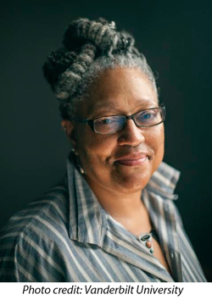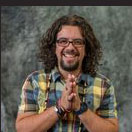difficult conversations
Select an item by clicking its checkbox
The opening paragraph of the Vanderbilt University Statement of Commitments: The Divinity School is committed to the faith that brought the church into being, and it believes that one comes more authentically to grasp that faith by a critical and open examination of the Hebraic and Christian traditions. It understands ...

Start Talking: A Handbook for Engaging Difficult Dialogues in Higher Education
Date Reviewed: November 29, 2017
Funded by the Ford Foundation, neighboring universities joined in a two-year partnership hoping to make the “learning climate” on each campus “more inclusive of minority voices and ways of knowing” and safer “for the free exchange of ideas” (ii). This spiral-bound handbook documents the plans and experiences of the faculty, administrators, and staff at Alaska Pacific University and the University of Alaska Anchorage who sought to deepen “civil discourse” on each campus. The project primarily focused on faculty development for “difficult dialogues” within classrooms, but also addressed broader campus atmosphere and structures of support. The volume is meant to be a “conversation-starter and field manual for [those] who want to strengthen their teaching and engage students more effectively.”
The first four chapters (Ground Rules, Rhetoric/Debate, Race/Class/Culture, Science/Religion) are framed by the training faculty received as part of four day-long faculty intensives. Rather than a straight narrative, each chapter reads as both a how-to manual and an assessment of implementation – summaries of proposed pedagogical techniques are followed by faculty essays that document what happened when they applied those approaches in the classroom. A fifth topical chapter (Business/Politics) documents an additional set of teaching techniques and case studies. Brookfield and Preskill’s Discussion as a Way of Teaching served as a guiding text for the group’s work, but they also drew from the wisdom of fellow faculty. The book’s essays, by thirty-five faculty and staff involved in the initiative, make clear they found the project’s prompt to reflect and adapt teaching approaches to be helpful.
The final chapters (Outcomes, Keep Talking) offer an assessment of the two-year project (successful in its deepening of the sense of each institution as a place of “profound learning, of courageous inquiry, [and] deep transformation” for “students, faculty, staff, administrators, and community partners” [247]) and brief suggestions for maintaining the project’s benefits. Every chapter includes color-coded lists, summaries, and tips, which prove useful when skimming the text for material relevant to a variety of topics and contexts. The volume closes with a list of references and readings on topics discussed in the chapters, including: academic freedom, safety, contrapower harassment, rhetoric, argument, debate, identity, privilege, culturally responsible teaching, politics, and social justice.
Start Talking includes a deep storehouse of pedagogical and practical wisdom. In many ways the volume reads more like a grant proposal and summary of results than a cohesive narrative. As a result, rather than reading the text straight through, faculty members or departments facing specific issues might search the volume for targeted resources to navigate difficult conversations. Similarly, institutions hoping to shift campus climates in contentious times might identify approaches to pilot with small teams over the course of an academic year. Finally, and particularly because most of the volume’s content addresses difficult conversations around issues other than religion (such as race, class, culture, politics, and science), the book’s resources provide a useful, lower-stakes entry point for faculties at religiously-based institutions to think about how to navigate contentious theological discussions.
Every semester I stand in front of my classes at my predominantly white state university and argue, “whiteness came into being through more than five hundred years of dominant cultural narratives undergirded by [white] Christianity, laws, and sciences which have proclaimed the innate inferiority of those outside dominant white culture.” ...
It was my first semester teaching about 10 years ago in a seminary. Our class of about 35 students was into the second week of the semester and I was speaking about the complicity of the United States in the attack of 9/11. In the midst of my talk a student raised his ...

Stop Talking: Indigenous Ways of Teaching and Learning and Difficult Dialogues in Higher Education
Date Reviewed: November 30, -0001
In 2009, authors Ilarion Merculieff and Libby Roderick participated in the second of two higher education projects sponsored by the Ford Foundation’s national Difficult Dialogues initiative. This project was designed to “turn the tables” on traditional academic professors so that Alaska Native people would become their own teachers (iii). This book, Stop Talking, tells the story of the second project, laid out in a format that parallels the experience gained in a faculty immersion workshop with Alaska Native teachers, followed by an ongoing community of inquiry (chapters 1-5). The final chapters show the nature of change in pedagogy designed by faculty participants for one academic year and the assessment of the entire project, reflections, and strategies for changing higher education through indigenization (chapters 6 and 7).
The goal of this project was to instill deeper understanding of traditional indigenous worldviews, issues, and pedagogies by fostering respect for different ways to be teachers and learners (x). Sixteen faculty members participated in experimenting with Native ways of teaching and learning and introducing “difficult dialogues” regarding Alaska Native concerns during a week-long intensive workshop. The flow of the intensive time together is outlined in the first four chapters.
The format for teaching during the workshop included much silence, a slower pace, and no note-taking. Learning occurred by non-verbally internalizing that which was important because words, in the Aleut tradition, are considered a constraint on intelligence, getting in the way of living in the present; therefore, ground rules for the intensive workshop included paying attention to being part of a whole through deep connection, often wordless, thereby making one a “real human being.” Participants learned that Native pedagogies occur out of teaching practices such as slowing down to be in relationship with each other and the Earth, close observation and emulation, use of all senses in silence, storytelling, dance, and games. Participants used these practices throughout the week during daily workshops, and were invited to think about the courses they normally teach in light of such practices. The difficult conversation topics followed later in the week, when faculty participants began to deal with the institutional racism and the Western methodology of science and research used in institutions that ignores or devalues Native ways of learning and teaching.
During the intensive, faculty began to integrate the particularity of their course material with a wider, deeper pedagogy. Afterward, the group agreed to meet monthly for one academic year to continue their community of inquiry. They conducted formal assessment of their work, and engaged in deep reflection together.
Roderick’s call to this indigenizing of higher education is important: “If we can do these two things – learn from these ancient cultures fresh ways of approaching the tasks of learning while simultaneously working to overthrow the ongoing legacy of colonization that still plagues modern indigenous peoples – we will have accomplished a great deal” (ix). Indeed, such work is essential for equitable, deep education. This work is our future. This book, filled with story and wisdom, is our guide.


